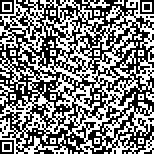Archive > Volume 39 Issue 2 > 2013,39(2):203-209. DOI:10.7519/j.issn.1000-0526.2013.02.009 Prev Next
Studies on the Precipitation Estimation in Central Yunnan Based on Satellite and Radar Data
- Article
- Figures
- Metrics
- Preview PDF
- Reference
- Related
- Cited by
- Materials
Abstract:
The 3 h precipitation estimates at the 18 stations in central Yunnan were made by using the data of TBB, TBB temperature gradient, vapour cloud, total cloud cover, cloud classification, radar basic reflectivity and AWS (automatic weather station) rainfall from May to October of 2008-2010, and the analysis was made by using BP neural network modeling forecast model, traditional Z I relations and cloud classification Z I relations. Results show that the false prediction ratio and deviation have been improved by the BP neural network modeling forecast model, and the comparative study is a test on precipitation forecast by the integrated data of radar and satellite.
Keywords:
Project Supported:
Clc Number:


Mobile website









